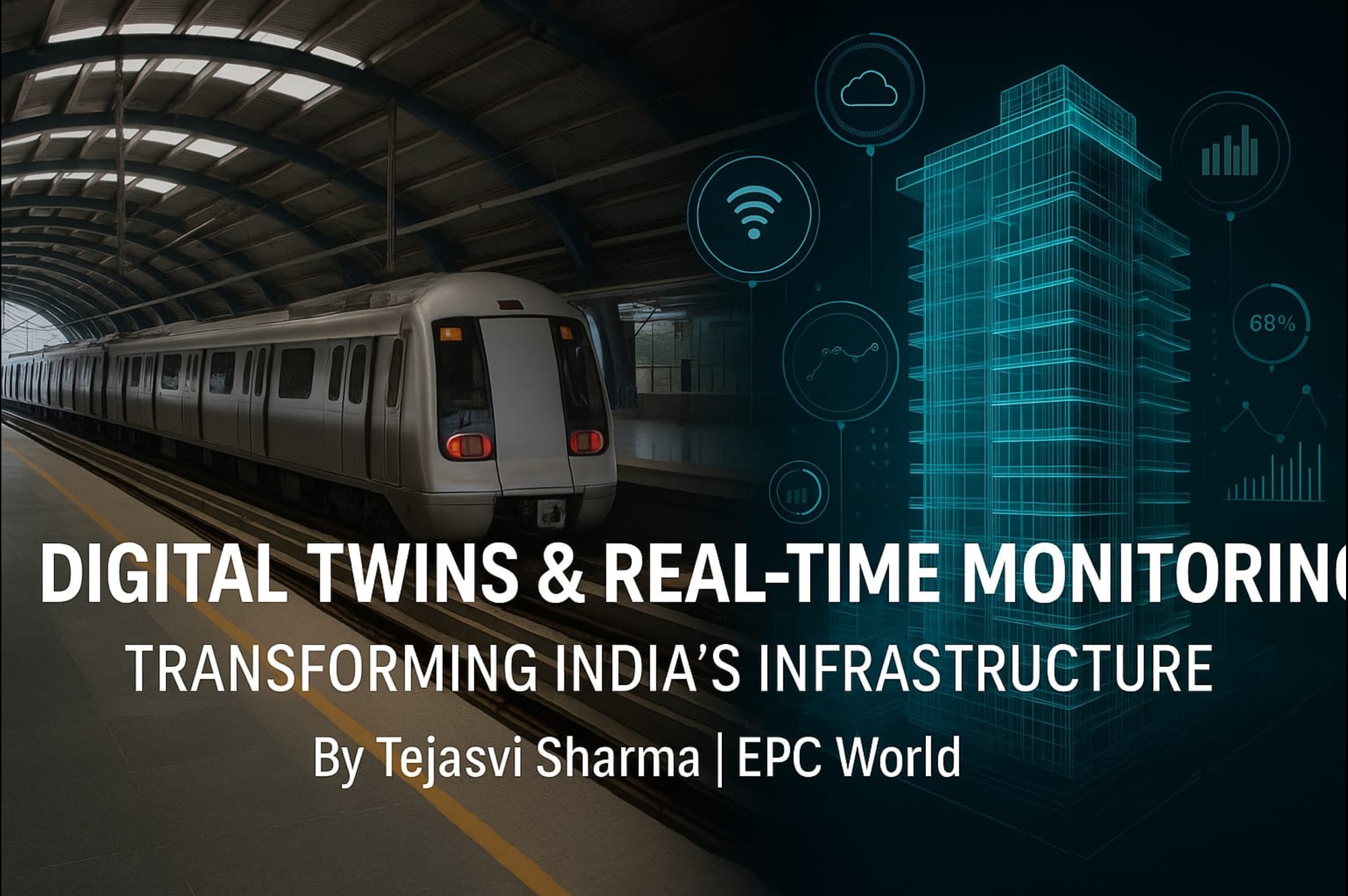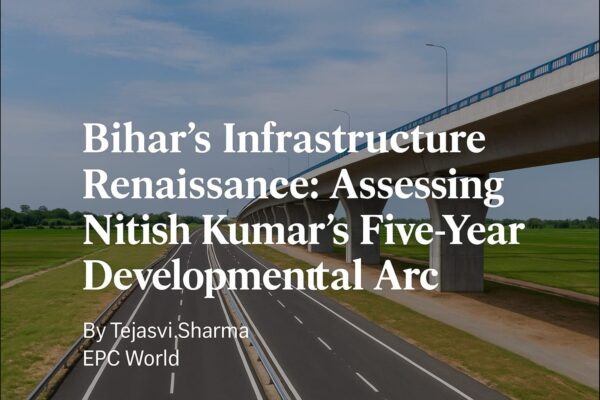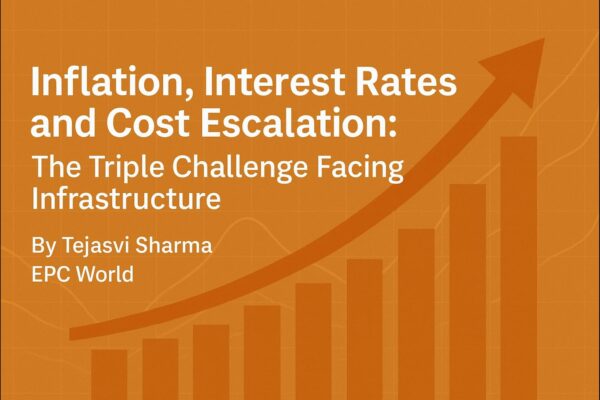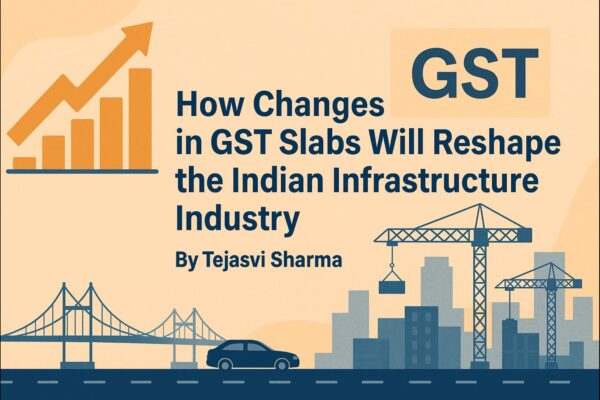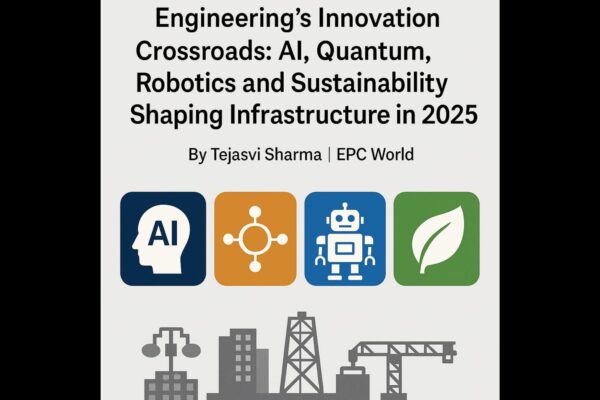Digital Twins & Real-Time Monitoring: Transforming India’s Infrastructure Lifecycle
by Tejasvi Sharma, Editor-in-Chief, EPC World
In the rapidly evolving landscape of India’s construction and infrastructure sector, Digital Twin technology is emerging as one of the most transformative tools in the arsenal of architects, engineers, and facility managers. No longer confined to conceptual stages or isolated pilot projects, Digital Twins—virtual replicas of physical assets enriched with real-time sensor data—are redefining how assets are monitored, maintained, and optimised across their lifecycle.
At its core, a Digital Twin is a dynamic, data-rich model that mirrors the physical building, infrastructure, or industrial facility. Unlike static Building Information Models (BIM), a Digital Twin remains in perpetual dialogue with its real-world counterpart through Internet of Things (IoT) sensors, cloud-based analytics, and artificial intelligence (AI) algorithms. This continuous data feedback loop empowers predictive maintenance, operational efficiency, and facility management far beyond traditional approaches.
Beyond Design: A New Era in Asset Management
Historically, BIM has been instrumental in creating precise 3D models for design and construction. However, once the construction phase ended, these models often became dormant archives. Digital Twins change that paradigm entirely.
In India, where public infrastructure, metro rail systems, smart airports, and industrial corridors are expanding at unprecedented rates, Digital Twins enable real-time monitoring of energy consumption, structural integrity, and environmental performance. Facility managers can anticipate faults before they occur, reducing downtime and prolonging asset lifespan.
For instance, in a metro rail station, sensors embedded in escalators, HVAC systems, and lighting fixtures feed data into the Digital Twin. AI algorithms analyse performance patterns and alert operators about a potential failure days—or even weeks—before it happens. This proactive approach translates into significant cost savings and improved commuter experience.
The Technology Backbone: IoT, AI, and Cloud Computing
The effectiveness of Digital Twins hinges on the seamless integration of IoT devices, 5G connectivity, and cloud computing platforms. High-resolution sensors capture parameters such as temperature, vibration, humidity, and load-bearing stress. This data is transmitted in real-time to cloud servers, where AI and machine learning models detect anomalies, simulate scenarios, and recommend corrective actions.
With the rollout of 5G networks in India, the latency in data transmission has been drastically reduced, enabling more precise real-time interactions between the physical asset and its digital twin. Coupled with edge computing, critical analytics can now happen closer to the asset, further enhancing responsiveness.
Applications Across Sectors
1. Smart Buildings & Commercial Complexes
In high-rise commercial towers across Mumbai, Bengaluru, and Gurugram, Digital Twins optimise HVAC systems to balance comfort with energy efficiency, directly supporting green building certifications such as IGBC and LEED.
2. Industrial Facilities
Manufacturing plants are adopting Digital Twins to monitor production lines, detect mechanical wear, and reduce unplanned shutdowns—boosting productivity and operational uptime.
3. Infrastructure Projects
India’s major airport expansions, expressways, and metro networks are integrating Digital Twins for structural health monitoring. By simulating stress tests in a virtual environment, engineers can predict the impact of extreme weather or high traffic loads.
4. Smart Cities Mission
Cities like Pune, Surat, and Amaravati are piloting Digital Twin ecosystems to oversee water distribution networks, traffic management, and waste treatment plants in real time.
Predictive Maintenance: From Reactive to Proactive
In traditional asset management, maintenance is often reactive—responding after a breakdown occurs. Digital Twins, coupled with predictive analytics, invert this approach. By continuously comparing real-time sensor data against historical performance, these systems forecast potential issues before they manifest physically.
For example, a highway bridge embedded with load and vibration sensors can signal fatigue in specific girders well before they reach critical thresholds. Maintenance crews can address the issue during planned service windows, avoiding catastrophic failures and costly emergency interventions.
Driving Sustainability and ESG Goals
Sustainability is no longer an optional checkbox for Indian infrastructure projects—it is a mandate. Digital Twins help achieve sustainability targets by enabling energy optimisation, waste reduction, and carbon footprint tracking over the entire operational life of an asset.
By integrating with Building Energy Management Systems (BEMS), Digital Twins can simulate the impact of replacing traditional lighting with LED systems, adjusting HVAC schedules based on occupancy patterns, or retrofitting insulation. The measurable data produced becomes invaluable for ESG (Environmental, Social, and Governance) reporting, which is increasingly demanded by investors and global stakeholders.
Challenges in Indian Adoption
While the potential is enormous, the adoption of Digital Twins in India faces certain hurdles:
- Initial Capital Investment: High upfront costs for IoT sensors, cloud infrastructure, and integration deter smaller developers.
- Data Interoperability: Ensuring seamless integration between legacy systems, BIM models, and modern IoT platforms remains a technical challenge.
- Skilled Workforce: A shortage of trained professionals capable of managing the complex interplay of engineering, data science, and IT slows widespread deployment.
- Government-backed training programs and Open BIM standards could accelerate adoption, making Digital Twins accessible beyond marquee projects.
The Road Ahead: Integration with National Infrastructure Vision
The National Infrastructure Pipeline (NIP) and Smart Cities Mission are fertile grounds for Digital Twin deployment at scale. As tenders increasingly specify BIM Level 3 and live asset monitoring requirements, Digital Twins will become integral to the Indian EPC (Engineering, Procurement, and Construction) workflow.
Moreover, the rise of Public-Private Partnerships (PPP) in infrastructure will drive accountability for operational performance, making Digital Twins a critical tool for transparent reporting and service-level compliance.
Conclusion: A Transformative Leap for India’s Built Environment
The integration of Digital Twin technology with real-time monitoring represents not just a technological upgrade, but a shift in philosophy—viewing buildings and infrastructure as living, evolving entities rather than static monuments.
As India invests billions into its physical backbone, from expressways to urban metros, the ability to manage, predict, and optimise these assets throughout their life will determine the nation’s return on investment. Digital Twins, powered by IoT, AI, and cloud computing, are poised to become the cornerstone of this vision, ensuring that India’s infrastructure is not just built—but built to last, adapt, and thrive in a dynamic future.
Tags

